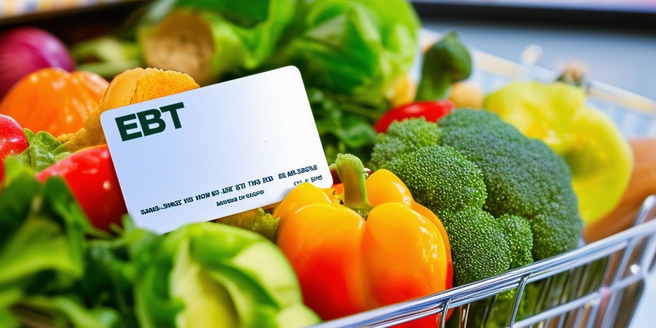What are SNAP Benefits?
The Supplemental Nutrition Assistance Program (SNAP Benefits) is a valuable federal assistance initiative within the United States, specifically designed for low-income individuals and families in need of nutritional support. Eligible recipients are issued an Electronic Benefits Transfer (EBT) card, mirroring a debit card, that’s loaded with benefits for purchasing food, thus serving as a link to afford basic, nutritious food. It’s used just like a standard debit card, but the purchases are limited to eligible food items such as vegetables, fruits, grains, and proteins to maintain a balanced diet. However, the card is not universally accepted and can only be used at authorized retail food stores, in collaboration with the program, ensuring the funds are spent exclusively for their intended purpose, contributing to the efficiency of SNAP Benefits in providing nutritional aid to low-income individuals and families.
Eligibility Requirements for SNAP
Eligibility for the Supplemental Nutrition Assistance Program (SNAP) is based on a household’s resources and income levels, which include tangible assets like bank savings, real estate, vehicles, and intangible assets of value, as well as earned and unearned income. Factors such as pensions, wages, and child support are considered. However, these eligibility criteria can vary widely based on state policies and regulations and each state has its own set of rules for identifying household resources and income levels for SNAP eligibility.
The number of individuals in a household also affects eligibility, with different thresholds established based on household size. Therefore, resources and income criteria can adjust based on the number of family members residing within the household, in an attempt to ensure equitable distribution of assistance, considering the varying needs and requirements of different households.
How to Apply for SNAP Benefits
The application for Supplemental Nutrition Assistance Program (SNAP) benefits often starts by visiting your local Department of Human Services office, although some states now allow online submissions. The process involves a series of interviews to assess the applicant’s eligibility and financial need based on factors including income, assets, residence, and household size; additional documentation may be required. This comprehensive, two-pronged approach of interviews and document verification ensures the SNAP benefits reach those most in need.
Understanding the Calculation of SNAP Benefits
The distribution of SNAP (Supplemental Nutrition Assistance Program) benefits to a recipient involves careful calculation, considering income, available resources, and household size. Income signifies the recipient’s financial standing, while resources – physical properties to investments – contribute to total income. Larger households receive higher benefits due to more individuals to feed and maintain. The calculation process involves deductions from the total income for regular expenses like housing and childcare, enabling an estimation of funds available for nutritional purchases. After deductions, the remaining amount is the net income. The SNAP benefit amount is calculated based on this net income, ensuring it’s not arbitrary but determined considering the recipient’s income, resources, household size, and deductions. The detailed calculation aims to equally and appropriately distribute benefits to families truly needing food and nutrition assistance.
Managing and Using Your SNAP Benefits
After obtaining your Electronic Benefit Transfer (EBT) card, pre-loaded with Supplemental Nutrition Assistance Program (SNAP) benefits, you can buy qualifying food from authorized retailers. It’s crucial to responsibly handle these benefits throughout the benefit period to prevent premature fund exhaustion. This can be avoided by regularly monitoring your benefit balance and strategic shopping.
Maximizing your benefits is achievable through various shopping methods like buying non-perishable food items in bulk and using coupons to save on costs. Though it may require a bit of extra attention, it significantly stretches your benefits.
In conclusion, coupled with strategic purchasing, bulk buying, and couponing, your SNAP benefits on the EBT card can effectively fulfill your food needs for the benefit period, thereby improving the reach of your benefits and satisfying your dietary requirements.
FAQs About SNAP Benefits
Many individuals often inquire about the Supplemental Nutrition Assistance Program (SNAP) and its benefits, including eligibility of foods for SNAP benefits and what to do upon loss of the Electronic Benefits Transfer (EBT) card. Regularly raised issues also concern how to report changes in income or household size, critical factors affecting benefits received, all of which may seem complex especially for new beneficiaries. These inquiries, and others about SNAP, can be addressed by visiting the official SNAP website or by consulting representatives at local Department of Human Services (DHS) offices, who will provide clarification and guidance about the program, including eligibility criteria, application process, card replacement, and reporting changes affecting benefits.



